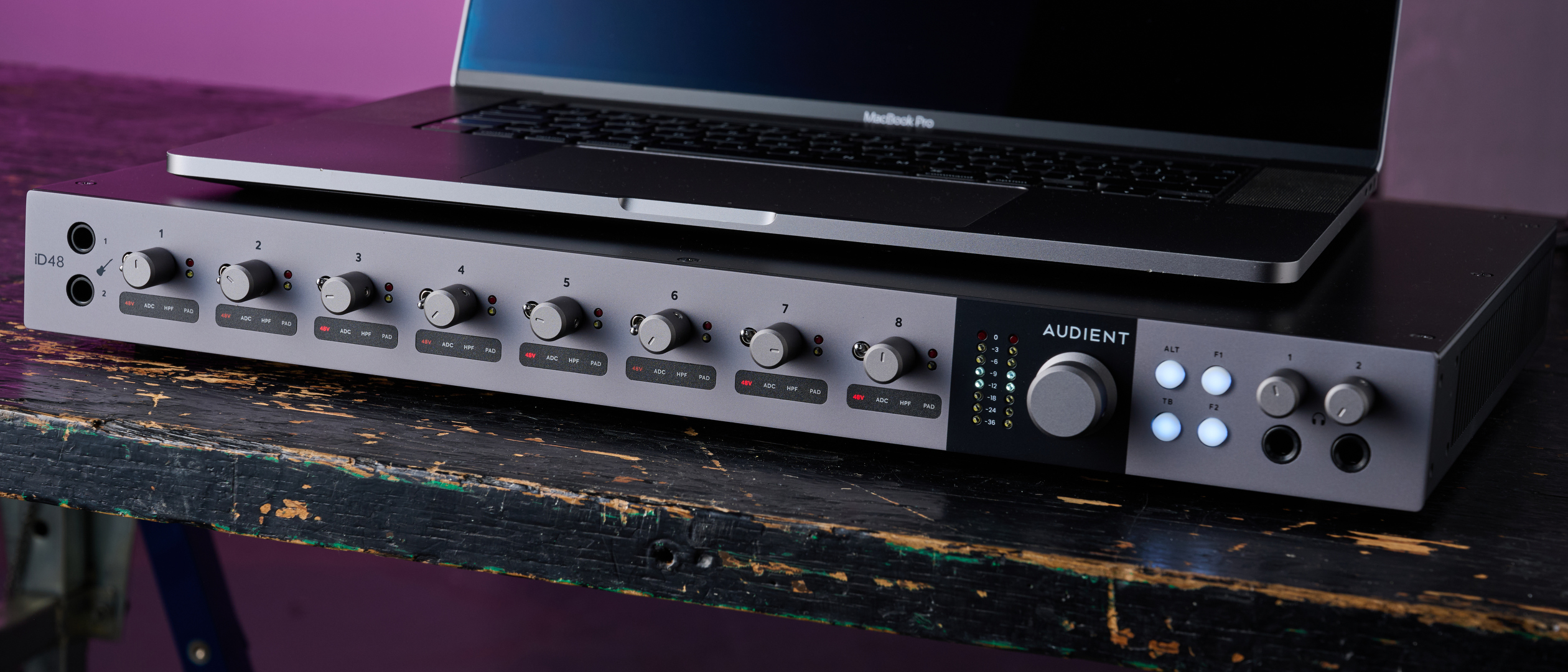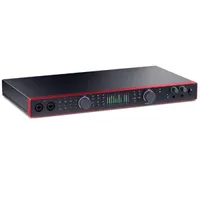MusicRadar Verdict
Even if you’re not using outboard gear, it’s still a phenomenally good audio interface for use at home, thanks to its fantastic quality conversion. It’s a lot of audio interface for a relative cost that’s pretty good value for money, so if you’re looking to step up to something a little more ‘pro’ from a basic interface, the iD48 is a fantastic option.
Pros
- +
Actual console preamps.
- +
Insert points on all 8 channels.
- +
Powerful routing options for hardware inserts.
- +
Superb quality audio conversion.
Cons
- -
Insert naming conventions can be confusing.
- -
Overkill for the average home producer.
MusicRadar's got your back
What is it?
Entering into the now rather competitive space of 8-channel audio interfaces that bridge the gap between the pro realm and the home studio, the Audient iD48 is the latest release from the studio stalwarts, and it’s got a rather neat trick up its sleeve to help it trump the competition.
The headline feature is the 8 microphone preamps that are exactly the same as those in their ASP8024-HE console that’s found in studios all over the world, the same desk I work on at my weekend haunt, Spirit Studios. These aren’t DSP-powered emulations, or clones, but the exact same ones used in their professional-grade mixing consoles.
It’s a heady prospect, and that’s not all there is to shout about either. 32-bit ESS Digital Audio Converters, a huge 126.5dB dynamic range, and 68dB mic preamp gain all insinuate that this is a serious bit of kit with the specs to match its pro-grade preamps.
Two JFET instrument inputs adorn the front of the unit alongside two headphone outs capable of handling up to 600 ohm headphones. On the back, alongside those 8 mic pres, you’ve got four line outputs, two optical inputs, two optical outputs, and two clock ins and outs.
Interestingly, there’s also switchable insert routing that allows you to choose which source feeds the ADC path. That means you can use outboard gear on a per-channel basis, keeping an ultra-short signal path with no re-patching. You can use outboard gear at both the recording and mixing phases without having to get stuck in your patchbay, and you can also bypass the mic pres altogether if you want to use an outboard preamp.
Pricing
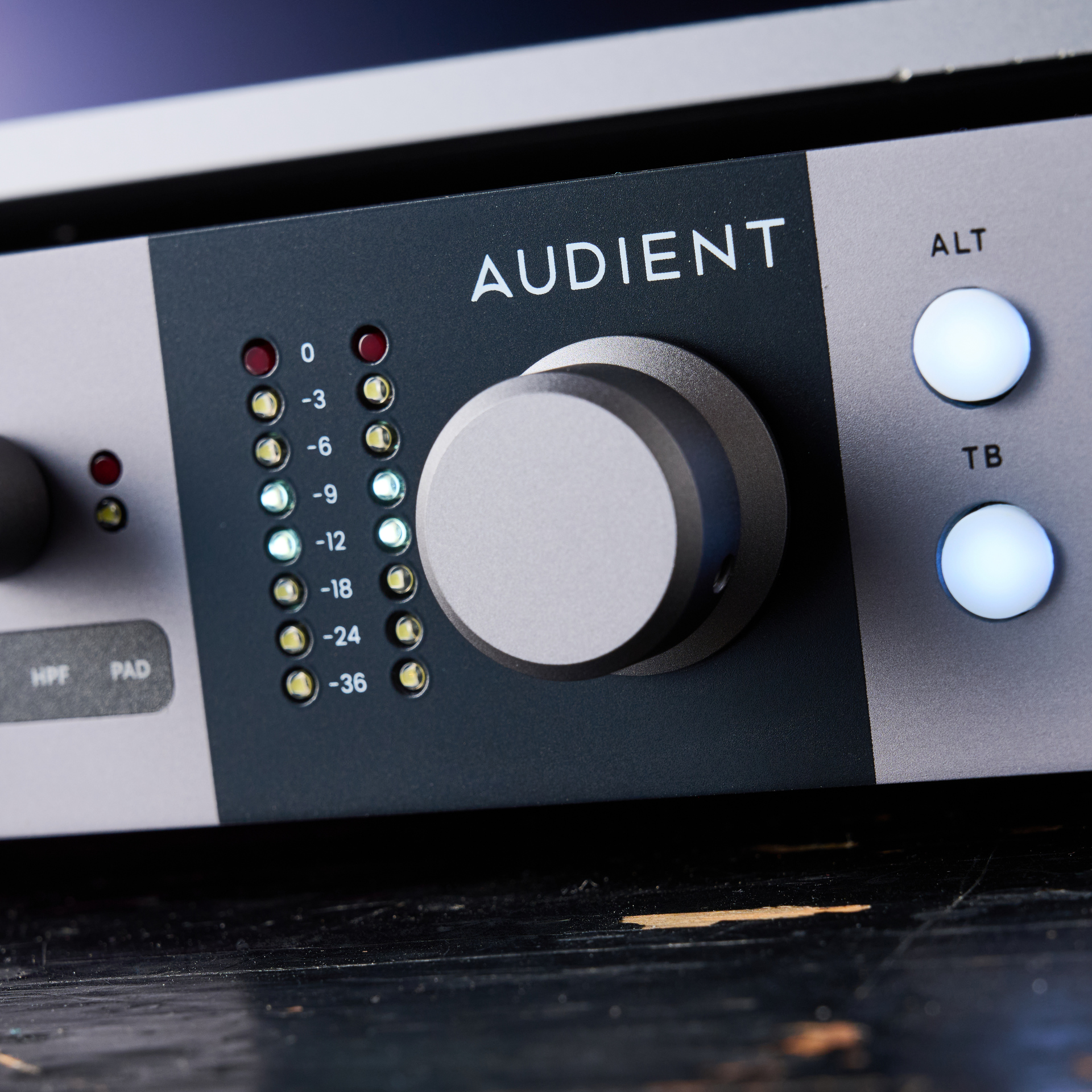
Installation & software
Getting the iD48 setup with my MacBook Pro was a breeze, and I didn’t even need to install the additional iD mixer software to get it up and running. I simply plugged in the power cable, hooked up the USB-C, and Pro Tools instantly recognized the interface and allowed me to use it.
It comes with a pretty generous software offering, and it’s definitely one that’s aimed towards the more advanced producer thats likely to get the most out of it. Highlights for me are the 2-month free trial of Sonarworks with a 20% discount on the full thing, which gives you the option to tune your monitors and headphones - although you’ll need the additional mic to do the former.
Want all the hottest music and gear news, reviews, deals, features and more, direct to your inbox? Sign up here.
You also get Strymon’s excellent BigSky reverb plugin, as well as more from Softube, Spitfire Audio, Torpedo, Gforce, Loopcloud, and more. Admittedly, most producers looking for this type of interface will likely already have a decent collection anyway, but it definitely helps it feel like better value for money.
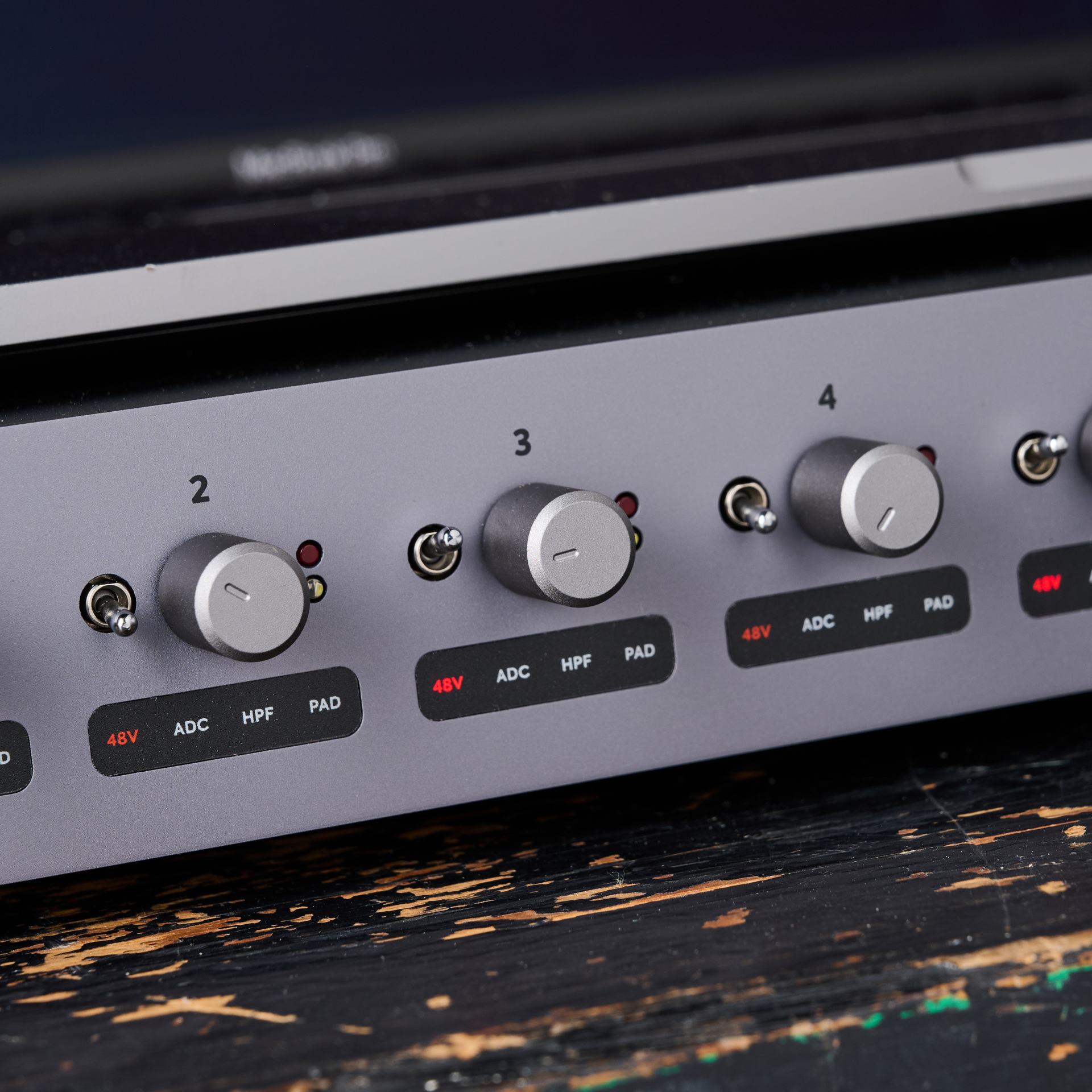
Performance
Getting the iD Mixer software up and running, this is where a lot of the action happens in terms of routing, as you’re able to access many options not available in your DAW. Most of the stuff in here is fairly standard, but the real innovation is the ADC Direct mode. With it engaged, the preamp signal isn’t routed anywhere, allowing you to send a signal from your DAW to your outboard without having to repatch it.
It’s a crazy good option, meaning you can use the same outboard compressor for tracking and in the mixdown phase, without having to start plugging cables in and out of your patchbay. However, it is quite confusing to get your head around.
The manual isn’t superb at describing it, and because Pro Tools insists you use the same numbered in and out for hardware inserts, you have to use your digital outs if you want to use 8 channels for hardware at the same time. It is totally worth the effort to get your head around it though, as being able to use the same hardware for incoming signals and for the mixdown phase is a big time saver.
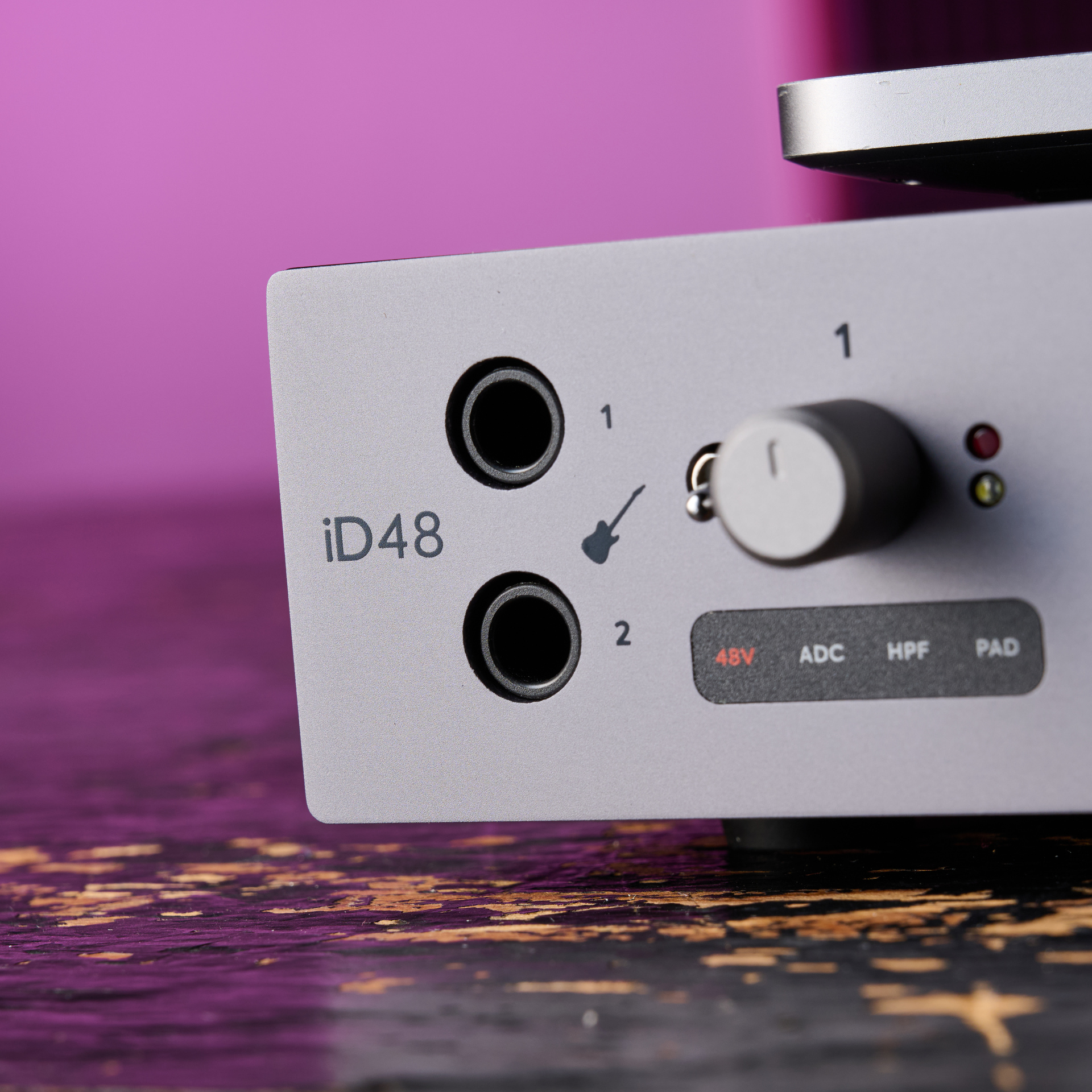
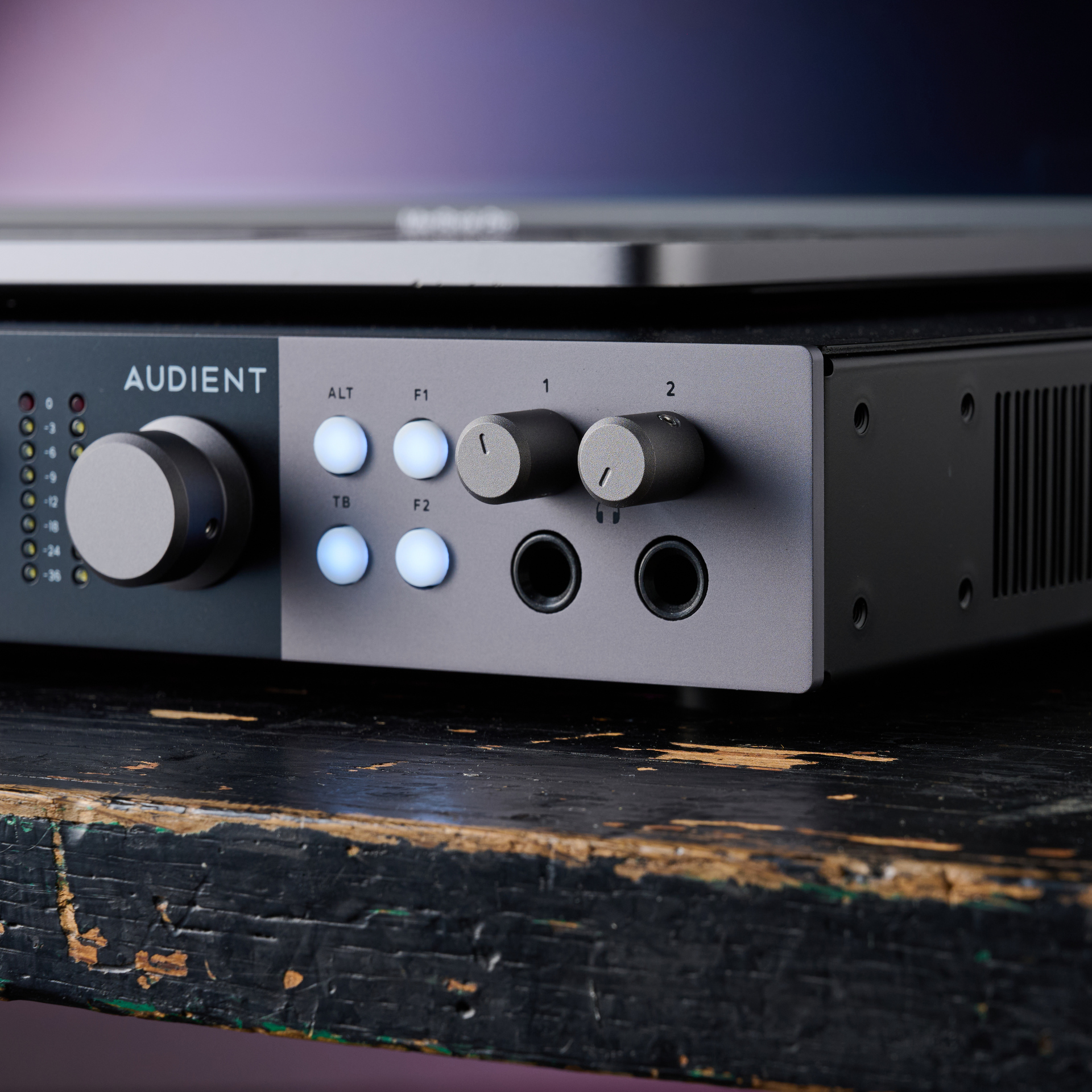
Whilst I was testing the iD48 I was also reviewing the rather unwieldy Submarine Pickups Subsix, an external guitar pickup that splits each string into an individual channel. This allowed me to get my first taste of those Audient Console mic pres, as I had to balance the gain between the different timbres of each string.
I do love using knobs when dialing in my gain amounts though, so I appreciate that each channel has its own dedicated knob, and doing it this way meant it didn’t take long to get a nice balance going.
Of course, for fine-tuning your input gain you’ll want to check your levels in your DAW or using the iD Mixer app rather than using the 2-stage indicator lights built into the front of the unit which are good for checking if you’re clipping the signal, but other than that, rather limited.
I also used the two JFET inputs on the front, which I found were excellent for getting direct guitar tones, and the headphone outs were plenty powerful enough to drive my 250-ohm Beyerdynamic studio headphones, which can sometimes be an issue with home-studio grade interfaces.
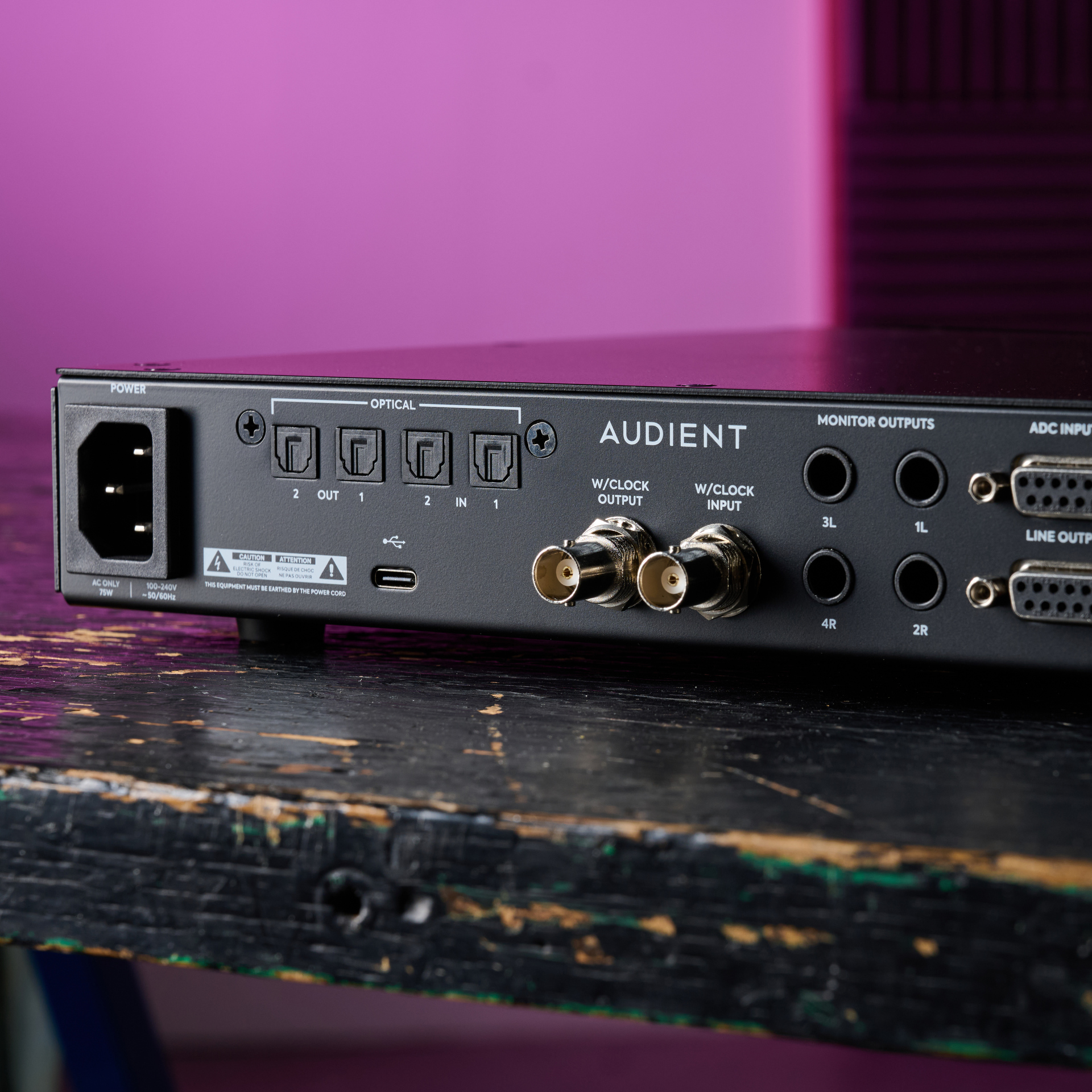
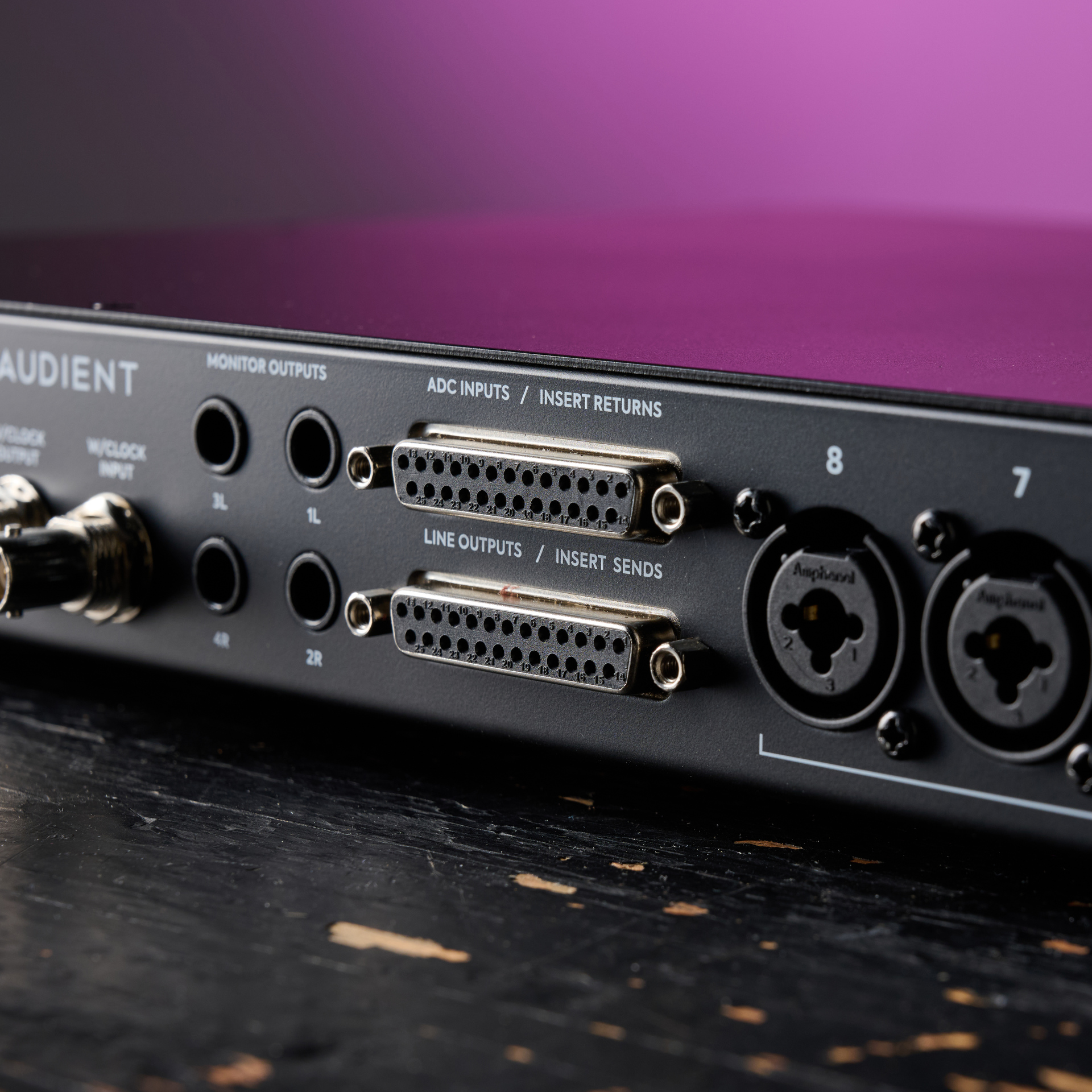
Verdict
As a regular user of the ASP8024-HE console, I’m a big fan of the preamp sound, and the iD48 absolutely delivers that same level of clarity and quality. But the real star of the show with the iD48 is that it has the ingenious ability to give you easy routing to external hardware with no re-patching at both the recording and mixdown phases.
MusicRadar verdict: Even if you’re not using outboard gear, it’s still a phenomenally good audio interface for use at home, thanks to its fantastic quality conversion. It’s a lot of audio interface for a relative cost that’s pretty good value for money, so if you’re looking to step up to something a little more ‘pro’ from a basic interface, the iD48 is a fantastic option.
Hands-on demos
Alternatives
Focusrite Scarlett 18i20 4th Gen - $649/£599
Focusrite’s latest 8-channel audio interface is unbelievably easy to use, thanks to its logical layout and excellent software. If you’re not a big user of outboard gear, then it’s a great option for those who work mainly in the box.
Read more: Focusrite Scarlett 18i20 4th Gen review
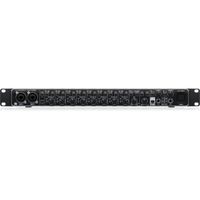
Behringer UMC1820 - $229/£149
For those who need 8 channels on a budget, the Behringer UMC1820 is an excellent choice. It doesn’t have all the bells and whistles of the other interfaces here, but if you just need 8 channels and want to do all your processing with plugins, it’s a great low-cost option.
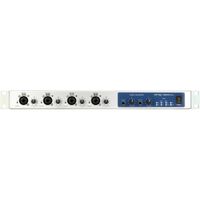
RME Fireface 802 FS - $2,299/£1,499
It’s been around for a while, but the RME Fireface 802 FS is a brilliantly designed audio interface that features superb preamps. It’s got loads of great features and an incredibly robust driver that provides excellent low-latency performance.
Specifications
Connectivity | USB 2.0 |
Form Factor | Rackmount |
Simultaneous I/O | 24 x 32 |
Number of Preamps | 8 |
Phantom Power | Yes |
A/D Resolution | 24-bit/96kHz |
Analog Inputs | 8 x XLR-1/4" combo, 1 x DB-25, 2 x 1/8" |
Analog Outputs | 4 x 1/4" (monitor), 1 x DB-25 |
Digital Inputs: | 2 x Optical (ADAT) |
Digital Outputs: | 2 x Optical (ADAT) |
Headphones: | 2 x 1/8" |
USB: | 1 x USB-C |
Clock I/O: | 2 x Word Clock |
Contact: |

Matt is a Junior Deals Writer here at MusicRadar. He regularly tests and reviews music gear with a focus on audio interfaces, studio headphones, studio monitors, and pretty much anything else recording-related. Matt worked in music retail for 5 years at Dawsons Music and Northwest Guitars and has written for various music sites including Guitar World, Guitar Player, Guitar.com, Ultimate Guitar, and Thomann’s t.blog. A regularly gigging guitarist with over 20 years of experience playing live and producing bands, he's also an alumnus of Spirit Studios, where he studied studio engineering and music production.
You must confirm your public display name before commenting
Please logout and then login again, you will then be prompted to enter your display name.
